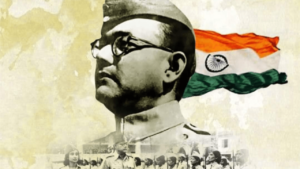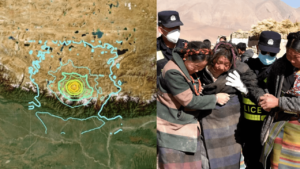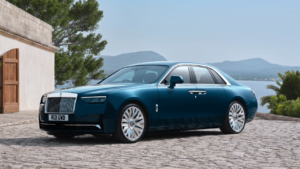NASA is evaluating a backup plan to use SpaceX for returning astronauts currently aboard the ISS on Boeing’s Starliner due to safety concerns. NASA is considering the option to have SpaceX launch a crew vehicle with two open seats for a return in 2025.

NASA’s collaboration with Boeing on the Starliner spacecraft has encountered significant challenges, prompting the agency to explore a backup plan involving SpaceX. With recent technical difficulties and safety concerns, NASA is considering using SpaceX to return the astronauts currently aboard the International Space Station (ISS) on Starliner. Initially planned as a short mission, the astronauts’ stay could now extend into 2025.
The Current Situation
Boeing’s Starliner spacecraft, designed to transport astronauts to and from the ISS, has faced multiple issues during its latest mission. Astronauts Sunita Williams and Butch Wilmore, who flew to the ISS on June 6, 2024, were expected to return after a week-long mission. However, multiple thruster failures and helium leaks in the propulsion system have extended their stay indefinitely.
NASA and Boeing have been working tirelessly to resolve these issues. Despite Boeing’s assurance that Starliner is ready for the return trip, NASA officials are not entirely convinced. The agency’s growing discomfort with Starliner’s readiness has led to the consideration of a backup plan involving SpaceX.
Technical Challenges with Starliner
- Thruster Failures: Several thrusters on Starliner failed during the mission, raising concerns about the spacecraft’s ability to safely return to Earth. These thrusters are crucial for positioning Starliners in space, particularly during the deorbiting process.
- Helium Leaks: The propulsion system’s helium leaks further complicate the situation. Helium is essential for maintaining pressure in the system, which is necessary for the thrusters to function correctly.
- Overheating Issues: Ground tests revealed that overheating caused some thrusters to automatically shut down. This was traced back to a Teflon seal warping and restricting propellant flow, weakening the thrusters’ performance.
The Backup Plan: SpaceX to the Rescue
Given the unresolved issues with Starliner, NASA is considering using SpaceX’s Crew Dragon spacecraft to bring Williams and Wilmore back to Earth. This plan would involve SpaceX launching a crew vehicle to the ISS with two open seats, potentially in September 2024, and returning in early 2025.
Ken Bowersox, NASA’s associate administrator for space operations, emphasized that this is just a contingency plan, and no final decision has been made. However, the increasing concerns over Starliner’s readiness have made this alternative more viable.
Implications for NASA and Boeing
This situation presents several implications for both NASA and Boeing:
- Extended Stay for Astronauts: If NASA decides to go with SpaceX, Williams, and Wilmore will remain on the ISS until SpaceX’s vehicle departs in early 2025. This extended stay would allow them to continue their scientific research and equipment maintenance on the ISS.
- Impact on Boeing: A decision to use SpaceX for the return trip would be a significant setback for Boeing. It would highlight the technical challenges Boeing has faced with Starliner and could affect their future contracts and reputation in the aerospace industry.
- NASA’s Dual-Supplier Strategy: NASA’s initial goal was to have both Boeing and SpaceX as reliable partners for transporting astronauts to and from the ISS. The current situation underscores the importance of having multiple options but also highlights the challenges of ensuring both suppliers meet NASA’s stringent safety standards.
Future Prospects
Despite the current challenges, both NASA and Boeing are committed to resolving the issues with Starliner. Boeing has stated that they will take the necessary actions to configure Starliner for an uncrewed return if required. This would allow for further testing and improvements without risking astronaut safety.

A History of Setbacks
The Starliner program has been plagued by delays and technical issues since its inception. Initially planned to be a competitive counterpart to SpaceX’s Crew Dragon, Starliner has faced numerous obstacles that have hindered its progress.
- Initial Development Delays: Since its development began over a decade ago, Starliner has struggled with costly technical hurdles, putting the spacecraft behind schedule.
- First Crewed Flight: Despite these challenges, Starliner completed its first crewed flight to the ISS in June 2024, carrying astronauts Sunita Williams and Butch Wilmore. This mission was intended to demonstrate Starliner’s capabilities and secure final certification from NASA.
- Ongoing Issues: However, the mission has been extended due to the discovery of multiple thruster failures and helium leaks. Ground tests have further revealed overheating issues that need to be addressed.
The Role of SpaceX
SpaceX, founded by Elon Musk, has become a crucial partner for NASA in recent years. With its Crew Dragon spacecraft, SpaceX has successfully transported astronauts to and from the ISS, demonstrating reliability and safety.
- Crew Dragon’s Success: SpaceX completed its first crewed flight to the ISS over four years ago and has since been NASA’s sole U.S.-based option for launching crewed missions to low-Earth orbit.
- Backup Plan: Given the current issues with Starliner, NASA is considering using SpaceX’s Crew Dragon as a backup plan. This would involve launching a crew vehicle to the ISS with two open seats for the return of Williams and Wilmore.
Potential Outcomes
The decision to use SpaceX for the return of Starliner astronauts would have significant implications for the future of space missions:
- Safety First: NASA’s top priority is the safety of its astronauts. If the agency decides to use SpaceX, it would ensure the safe return of Williams and Wilmore, even if it means postponing the return until early 2025.
- Impact on Boeing: This decision would be a blow to Boeing, highlighting the technical challenges and delays that have plagued the Starliner program. It could also affect Boeing’s future contracts with NASA and its reputation in the aerospace industry.
- Future Collaborations: NASA’s consideration of SpaceX as a backup plan underscores the importance of having multiple reliable partners for space missions. It also highlights the challenges of ensuring both suppliers meet NASA’s stringent safety standards.
End Note
NASA’s potential shift to using SpaceX for returning Starliner astronauts underscores the complexities and challenges of space missions. While Boeing continues to work on resolving Starliner’s technical issues, NASA’s consideration of a backup plan with SpaceX ensures the safety of astronauts remains the top priority.
This situation also highlights the importance of having multiple reliable partners for space missions. As NASA continues to explore and expand human spaceflight capabilities, ensuring the reliability and safety of spacecraft will remain a critical focus.
By addressing the current challenges and considering all options, NASA is taking a prudent approach to ensure the success of its missions and the safety of its astronauts.
Read Next:

The Psychology of Love: Why Valentines Day Matters More Epic Than You Think
Discover the psychology of love and why Valentines Day is more important than you think. Learn how love impacts the brain, strengthens relationships, and boosts

Premier League Highlights: Arsenal Humiliate Man City 5-1, Spurs and Palace Secure Crucial Wins
Arsenal demolished Manchester City 5-1 in a statement premier league highlights win, reigniting their title hopes. Meanwhile, Crystal Palace stunned Man United 2-0, and Tottenham

How Budget 2025 Impacts the Indian Middle-Class: Major Tax Benefits and Glaring Omissions
Budget 2025 offers major tax relief to the middle class, including zero tax on incomes up to ₹12 lakh. However, it misses out on incentives

Degrees vs Employability: Why “Highly Qualified Degree Holders” Struggle to Find Jobs While “Less Qualified Individuals” Get Hired Faster!
Many highly qualified individuals struggle to secure jobs, while less qualified candidates get hired quickly. This Degrees vs Employability paradox is caused by employer preferences,

The Power of Mindset: Why Looking Poor Doesn’t Make You Poor, but Thinking Poor Does!
Discover why looking poor doesn’t define your wealth but thinking poor does. Learn the power of mindset and how a growth-oriented mindset can lead to

Overthinking: How It’s Damaging Today’s Youth – Causes and Cure in 2025
Understanding how overthinking is silently damaging today’s youth, from its causes rooted in societal pressure and social media to its long-term effects on mental health.

Netaji Subhash Chandra Bose: An Epitome of Epic Leadership
Discovering the incredible life of Netaji Subhash Chandra Bose, a leader whose vision, courage, and determination redefined India’s freedom struggle. Explore his leadership qualities, ideology,

Global News Headlines Today: From Gaza Ceasefire to Blue Origin’s Massive 2025 Milestone
Explore today’s top global news headlines, from the Gaza ceasefire and Blue Origin’s historic spaceflight to Apple losing its top spot in China’s smartphone market.

The Hidden Danger of Social Media Nudity: A Threat to Today’s Youth in 2025
Understanding how social media nudity is impacting the youth and their future potential. Learn about the risks of unregulated content, cultural sensitivities, and solutions for

FA Cup 2024: Manchester United Survive Arsenal Test to Advance in FA Cup Fourth Round
Manchester United defeated Arsenal in a thrilling FA Cup third-round encounter, with Atlay Bayindir’s heroics sealing the win. Read about key moments, standout performances, and

Supercopa de España: Barcelona Dominate Real Madrid 5-2 to Claim Supercup
Barcelona delivered a stunning 5-2 victory over Real Madrid in the Supercopa de España final. Read about the key moments, star players, and the significance

Global News Highlights Today: India’s Metro Milestone, US Aid Shift, iOS Stunning Updates and More!
Explore today’s global news highlights, including the Tibet earthquake, political tensions in South Korea, LA wildfires, US aid shifts, and India’s metro milestone. Stay informed

The Power of Keeping Plans Private in 2025: Why Silence is the Key to Achieving Your Dreams!
Discover why keeping plans private is crucial for achieving your dreams. Learn how silence boosts focus, protects momentum, and helps you achieve success without distractions

Rolls-Royce Ghost Series II Arrives in India 2025: Elegance Meets Stunning Innovation
Discover the all-new Rolls-Royce Ghost Series II launched in India, priced from ₹8.95 crore. Explore its stunning design, luxurious interior, enhanced tech features, and powerful

Global News Highlights: Earthquakes in Tibet, US Bird Flu Crisis Fatality, Brics Welcomes Indonesia in 2025, and Many more
Explore this week’s global news highlights, including the first bird flu death in the US, Indonesia joining Brics, devastating earthquakes in Tibet, rising HMPV cases

Global News Highlights: From New Orleans Tragedy to Energy Crisis, Key Stories to Start 2025
Start 2025 with a comprehensive look at global news highlights. From the New Orleans attack to Israel’s airstrikes and South Korea’s aviation tragedy, explore the

A Tribute to Dr. Manmohan Singh: India’s 13th Prime Minister and Economic Visionary
Explore the life and legacy of Dr. Manmohan Singh, India’s 13th Prime Minister, celebrated economist, and architect of economic reforms. A tribute to his unparalleled

Boxing Day Premier League Highlights: Fulham Stun Chelsea 2-1, Liverpool Extend Massive Lead
Relive the Boxing Day Premier League action with key highlights, including Liverpool’s comeback win, Fulham’s late drama, and Newcastle’s dominant victory. The Premier League returned
